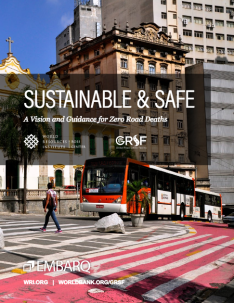Berkelanjutan dan Aman: Visi dan Panduan untuk Nol Kematian di Jalan

Ringkasan
Lebih dari 1,25 juta jiwa meninggal di jalan setiap tahun, sebagian besar berada di negara-negara berkembang, menjadikan kecelakaan lalu lintas sebagai penyebab kematian tertinggi nomor 10 di dunia. Laporan ini menemukan bahwa cara paling efektif untuk mencegah kematian akibat kecelakaan lalu lintas adalah pendekatan sistematik yang mengalihkan tanggung jawab dari pengemudi dan pejalanan kaki kepada para perencana dan pejabat kota yang merancang tata kota. Analisis di 53 negara menemukan bahwa kota yang mengambil pendekatan berbasis "Sistem Aman" berhasil mencapai tingkat kematian terendah per 100.000 pernduduk dan penurunan tingkat kematian terbesar selama 20 tahun terakhir.
Temuan Utama
Saat ini publikasi hanya tersedia dalam bahasa Inggris.
Some 1.25 million people die each year as a result of unsafe roads. Traffic deaths and serious injuries impose huge social and financial costs, particularly in lowand middle-income countries, where 90 percent of deaths occur. This report provides guidance for policymakers on how to develop a context-specific Safe System–based road safety strategy. It draws on a review of evidence-based literature, interviews with sector experts, statistical analysis, and the authors’ experience working with cities.
The Safe System approach requires a shift in responsibility from the people using roads to the people designing them. It is a systemic approach that integrates core management elements and action areas to create a safe mobility system. This report describes the components of the approach and presents evidence on its life-saving impact. Analysis of traffic fatalities in 53 countries conducted for this report finds that countries that have adopted a Safe System–based approach to road safety achieved both the lowest rates of fatalities and the largest reduction in fatalities over the past 20 years.